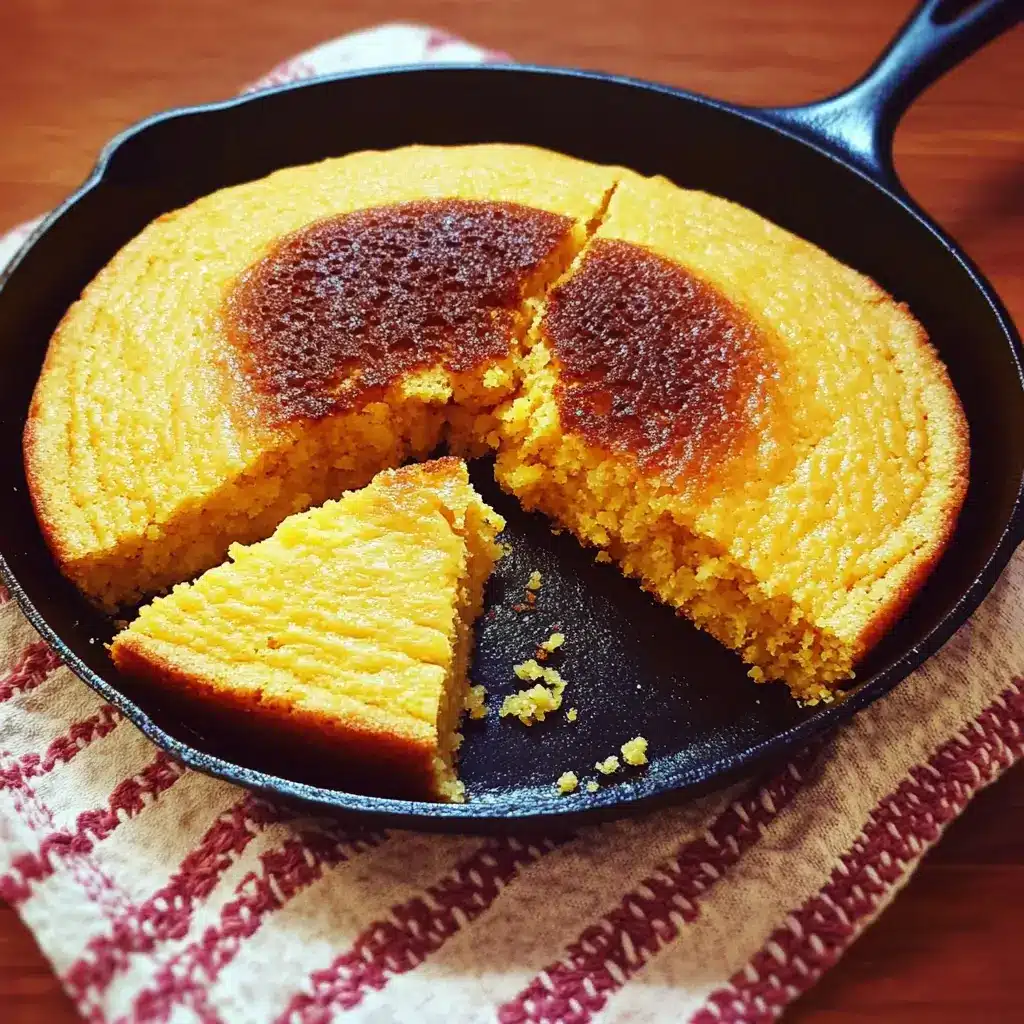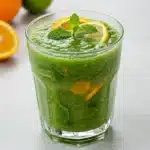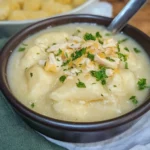Buttermilk cornbread. Just the words conjure up images of cozy kitchens, the comforting aroma of baking bread, and the satisfying crumble of a warm, golden slice. In my family, cornbread is more than just a side dish; it’s a staple, a tradition, and a love language all rolled into one. We’ve tried countless recipes over the years, searching for that perfect balance of moistness, flavor, and that unmistakable cornbread texture. And after much experimentation, I can confidently say, this buttermilk cornbread baked in a cast iron skillet is it. It’s the recipe that gets requested at every family gathering, the one that disappears in minutes from the table, leaving behind only happy faces and crumbs. The slight tang of buttermilk, the crisp edges from the cast iron, and the tender, melt-in-your-mouth crumb—it’s simply irresistible. If you’re on a quest for the ultimate cornbread experience, look no further. This recipe is your golden ticket.
Ingredients
To embark on this journey to cornbread perfection, you’ll need to gather the following ingredients. Each plays a vital role in creating the texture and flavor that makes this cast iron skillet buttermilk cornbread truly exceptional. Let’s delve into each ingredient and understand its purpose:
- 1 cup Yellow Cornmeal: The heart and soul of cornbread, yellow cornmeal provides that distinct corn flavor and characteristic crumbly texture. Opt for a medium-grind cornmeal for the best balance of texture and flavor. Fine-grind can make the cornbread too dense, while coarse-grind might result in a grainier texture. Using a high-quality cornmeal will significantly impact the final taste; look for stone-ground varieties if available for a richer, more complex corn flavor.
- 1 cup All-Purpose Flour: Flour provides structure to the cornbread, holding it together and preventing it from being overly crumbly. All-purpose flour is the standard choice, offering a good balance of gluten development. If you prefer a slightly denser cornbread, you can experiment with using bread flour, but all-purpose is generally recommended for the classic texture we’re aiming for. Ensure your flour is fresh for the best baking results.
- 1/4 cup Granulated Sugar: Sugar in cornbread is not just for sweetness; it also contributes to browning and tenderness. A quarter cup provides a subtle sweetness that complements the corn flavor without overpowering it. You can adjust the sugar slightly to your preference, but too much sugar can make the cornbread taste more like cake than traditional cornbread. For a slightly richer flavor, you could experiment with using a tablespoon or two of brown sugar in addition to the granulated sugar.
- 1 tablespoon Baking Powder: Baking powder is the leavening agent that makes the cornbread rise and become light and fluffy. It’s crucial to use fresh baking powder for optimal results. To test the freshness of your baking powder, place a teaspoon in a bowl and add a quarter cup of hot water. If it fizzes vigorously, it’s still active. If not, it’s time to replace it. Using the correct amount of baking powder is essential for the right texture; too little and the cornbread will be dense, too much and it might have a slightly bitter taste.
- 1 teaspoon Baking Soda: Baking soda works in conjunction with the buttermilk to create a tender crumb and enhance the rise. Like baking powder, ensure your baking soda is fresh for the best results. Baking soda is activated by acidic ingredients like buttermilk, so it’s an important component in this recipe.
- 1 teaspoon Salt: Salt is a flavor enhancer in baking, balancing the sweetness and bringing out the other flavors in the cornbread. It’s crucial not to skip the salt, even in sweet recipes. Table salt or kosher salt both work well in this recipe. If using kosher salt, you may want to use slightly more, as it is less dense than table salt.
- 1 cup Buttermilk: Buttermilk is the secret ingredient to incredibly moist and tender cornbread. Its acidity reacts with the baking soda and baking powder, contributing to the rise and creating a delicate crumb. The slight tang of buttermilk also adds a depth of flavor that is characteristic of traditional Southern cornbread. If you don’t have buttermilk on hand, you can make a quick substitute by adding 1 tablespoon of lemon juice or white vinegar to 1 cup of milk and letting it sit for 5 minutes to curdle slightly. However, for the best flavor and texture, real buttermilk is highly recommended.
- 1/2 cup (1 stick) Unsalted Butter, melted: Melted butter adds richness, flavor, and moisture to the cornbread. Using unsalted butter allows you to control the salt level in the recipe. Melt the butter completely and let it cool slightly before adding it to the batter to avoid cooking the eggs if they are added next. You can also use salted butter, but you may want to reduce the amount of added salt in the recipe slightly.
- 1 Large Egg: The egg acts as a binder, adding richness and structure to the cornbread. Use a large egg at room temperature for the best incorporation into the batter. Room temperature eggs emulsify better and contribute to a smoother batter.
Instructions
Now that you have all your ingredients ready, let’s get to the fun part – baking! Follow these step-by-step instructions to create a perfect cast iron skillet buttermilk cornbread every time. Each step is designed to ensure even mixing, proper cooking, and that golden-brown, crispy crust we all crave.
- Preheat Your Oven and Cast Iron Skillet: Begin by preheating your oven to 425°F (220°C). This high temperature is crucial for creating that signature crispy crust on the cornbread. While the oven is preheating, place your 10-inch cast iron skillet in the oven. This step is absolutely essential! Heating the skillet beforehand ensures that when the batter hits the hot pan, it starts cooking immediately, creating that beautiful, golden-brown crust on the bottom and sides. Let the skillet heat up for at least 10-15 minutes while the oven is preheating. Pro Tip: Make sure your cast iron skillet is well-seasoned to prevent sticking and ensure easy removal of the cornbread.
- Whisk Dry Ingredients: In a large mixing bowl, whisk together the yellow cornmeal, all-purpose flour, granulated sugar, baking powder, baking soda, and salt. Whisking is important here to ensure that the baking powder and baking soda are evenly distributed throughout the dry ingredients. This prevents clumps and ensures consistent leavening throughout the cornbread. Make sure to whisk thoroughly for about 30 seconds to a minute.
- Combine Wet Ingredients: In a separate bowl, whisk together the buttermilk, melted butter, and egg. Ensure the melted butter has cooled slightly so it doesn’t cook the egg when combined. Whisk until the wet ingredients are well combined and the egg is fully incorporated. Buttermilk should be well shaken before measuring to ensure it’s properly mixed.
- Combine Wet and Dry Ingredients: Pour the wet ingredients into the bowl with the dry ingredients. Using a rubber spatula or wooden spoon, gently fold the wet and dry ingredients together until just combined. Be careful not to overmix! Overmixing can develop the gluten in the flour, resulting in a tougher, denser cornbread. Mix just until the dry ingredients are moistened and there are no large streaks of flour remaining. A few small lumps are perfectly fine; in fact, they are preferable to overmixing. Remember, a slightly lumpy batter is better than a tough cornbread.
- Carefully Pour Batter into Hot Skillet: Once the oven and skillet are preheated, carefully remove the hot cast iron skillet from the oven using oven mitts. It will be extremely hot! Place the skillet on a heat-safe surface. Pour the cornbread batter into the hot skillet. You should hear a slight sizzle as the batter hits the hot pan – this is a good sign! The hot skillet immediately begins to cook the edges and bottom of the cornbread, creating that crispy crust. Spread the batter evenly in the skillet using a spatula.
- Bake to Golden Perfection: Place the skillet back into the preheated oven and bake for 20-25 minutes, or until the cornbread is golden brown and a toothpick inserted into the center comes out clean. The baking time may vary slightly depending on your oven and the size and thickness of your skillet. Start checking for doneness around 20 minutes. The cornbread should be nicely browned on top and the edges should be pulling away slightly from the sides of the skillet. If the top is browning too quickly, you can loosely tent it with foil for the last few minutes of baking to prevent it from burning.
- Cool Slightly and Serve: Once the cornbread is baked, remove the skillet from the oven and let it cool in the skillet for about 5-10 minutes before slicing and serving. This slight cooling period allows the cornbread to set up a bit and makes it easier to slice and serve. You can serve it directly from the skillet for a rustic presentation. Use a sharp knife or a pie server to cut wedges and serve warm.
Nutrition Facts
(Note: Nutritional information is an estimate and can vary based on specific ingredients and serving sizes.)
Servings: Approximately 12 servings
Calories per serving: Approximately 250-300 calories
- Fat: 12-15g
- Saturated Fat: 7-9g
- Cholesterol: 50-60mg
- Sodium: 300-350mg
- Carbohydrates: 30-35g
- Fiber: 2-3g
- Sugar: 8-10g
- Protein: 4-5g
Disclaimer: This nutritional information is an estimate based on common ingredients and online calculators. For precise nutritional information, use a nutrition calculator with the specific brands and quantities of ingredients you use.
Preparation Time
This delicious buttermilk cornbread is surprisingly quick and easy to prepare! Here’s a breakdown of the time involved:
- Prep Time: 15 minutes (This includes gathering ingredients, preheating the oven and skillet, and mixing the batter)
- Cook Time: 20-25 minutes
- Total Time: 35-40 minutes
From start to finish, you can have warm, homemade buttermilk cornbread on your table in under 40 minutes! This makes it a perfect side dish for weeknight dinners or a comforting addition to weekend brunches.
How to Serve
Buttermilk cornbread is incredibly versatile and can be served in so many delicious ways! Here are some of my favorite serving suggestions to elevate your cornbread experience:
- Classic Pairings:
- Chili: Cornbread and chili are a match made in culinary heaven. The slightly sweet and crumbly cornbread perfectly complements the rich, savory, and often spicy chili.
- Soups and Stews: Serve warm slices of cornbread alongside hearty soups and stews like bean soup, vegetable soup, or beef stew. It’s perfect for soaking up all the flavorful broth.
- BBQ: Cornbread is an essential side dish for any BBQ feast. It pairs wonderfully with pulled pork, ribs, brisket, and grilled chicken.
- Fried Chicken: The crispy, savory fried chicken and the moist, slightly sweet cornbread create a classic Southern comfort food combination.
- Breakfast and Brunch:
- With Butter and Honey: Simply spread warm cornbread with butter and drizzle with honey for a sweet and satisfying breakfast or brunch treat.
- Cornbread French Toast: Get creative and turn leftover cornbread into French toast! It adds a unique texture and flavor to this breakfast staple.
- Cornbread Benedict: Use slices of cornbread as the base for eggs benedict for a Southern-inspired brunch dish.
- Savory Sides:
- With Greens: Collard greens, mustard greens, or turnip greens are traditional Southern sides that are beautifully complemented by cornbread.
- Mac and Cheese: Cornbread adds a wonderful textural contrast and flavor element to creamy mac and cheese.
- Beans: Serve cornbread alongside black-eyed peas, baked beans, or pinto beans for a hearty and satisfying meal.
- Sweet Treats:
- Cornbread Pudding: Use leftover cornbread to make a delicious and comforting cornbread pudding.
- With Fruit and Whipped Cream: Crumble warm cornbread and top with fresh berries, peaches, or other seasonal fruit and a dollop of whipped cream for a simple and delightful dessert.
- Creative Toppings:
- Jalapeño Butter: Mix softened butter with finely chopped jalapeños and a pinch of salt for a spicy and flavorful topping.
- Maple Butter: Combine softened butter with maple syrup for a sweet and decadent topping.
- Herb Butter: Mix softened butter with chopped fresh herbs like thyme, rosemary, or chives for an herbaceous and aromatic topping.
- Cheese: Serve cornbread with a slice of sharp cheddar cheese or pepper jack cheese for a savory kick.
Additional Tips for Perfect Buttermilk Cornbread
To ensure your cast iron skillet buttermilk cornbread is a resounding success every time, here are five essential tips to keep in mind:
- Don’t Skip Preheating the Skillet: This is arguably the most crucial step for achieving that crispy, golden-brown crust. Preheating the cast iron skillet in the oven ensures that the batter starts cooking immediately when it hits the pan, creating that desirable texture and preventing the cornbread from sticking. A hot skillet is the key to cornbread perfection!
- Use Fresh Baking Powder and Baking Soda: Leavening agents are essential for the rise and texture of your cornbread. Expired baking powder or baking soda will not work as effectively, resulting in a dense, flat cornbread. Always check the expiration dates and test for freshness if you’re unsure. As mentioned earlier, you can test baking powder by adding a teaspoon to hot water; it should fizz vigorously.
- Don’t Overmix the Batter: Overmixing develops the gluten in the flour, leading to a tougher, denser cornbread. Mix the wet and dry ingredients together just until combined. A few lumps in the batter are perfectly acceptable and even preferable to overmixing. Gentle folding is the key to a tender crumb.
- Use Real Buttermilk: While you can substitute buttermilk with milk and lemon juice or vinegar, real buttermilk provides a unique tang and richness that significantly enhances the flavor and texture of the cornbread. If possible, opt for real buttermilk for the best results. If you find yourself frequently using buttermilk, consider keeping powdered buttermilk on hand for convenience.
- Adjust Sweetness to Your Preference: This recipe uses 1/4 cup of sugar for a subtly sweet cornbread. If you prefer a sweeter cornbread, you can increase the sugar to 1/3 cup or even 1/2 cup. However, be mindful that too much sugar can make the cornbread taste more like cake than traditional cornbread. You can also experiment with using brown sugar or honey for a different flavor profile.
FAQ Section
Here are some frequently asked questions about making buttermilk cornbread in a cast iron skillet, along with helpful answers to guide you to cornbread success:
Q1: Can I use self-rising cornmeal mix instead of cornmeal, flour, baking powder, and baking soda?
A1: While you can use self-rising cornmeal mix for convenience, I highly recommend using separate cornmeal, flour, baking powder, and baking soda for this recipe. Self-rising mixes often contain added salt and fat, which can alter the flavor and texture of the cornbread. Using individual ingredients allows you to control the exact ratios and quality, resulting in a superior cornbread. If you do choose to use self-rising cornmeal mix, omit the baking powder, baking soda, and salt from the recipe and follow the instructions on the mix package for liquid measurements, adjusting buttermilk accordingly if needed.
Q2: Can I make this cornbread ahead of time?
A2: Buttermilk cornbread is best enjoyed fresh and warm, but you can definitely make it ahead of time. For the best flavor and texture, bake the cornbread the day you plan to serve it. Store leftover cornbread in an airtight container at room temperature for up to 2-3 days. To reheat, you can wrap slices in foil and warm them in a low oven (300°F/150°C) for about 10-15 minutes, or microwave individual slices for about 30 seconds. Keep in mind that reheated cornbread may not be as moist as freshly baked cornbread.
Q3: Can I add cheese, jalapeños, or other mix-ins to this cornbread?
A3: Absolutely! This buttermilk cornbread recipe is a fantastic base for adding your favorite mix-ins. For a cheesy cornbread, add 1 cup of shredded cheddar cheese, Monterey Jack cheese, or pepper jack cheese to the batter before baking. For a spicy kick, add 1/4 cup of finely chopped jalapeños (fresh or pickled, seeded for less heat). Other delicious mix-in ideas include cooked crumbled bacon, corn kernels, chopped herbs like chives or rosemary, or even a swirl of honey or maple syrup on top before baking. Get creative and customize your cornbread to your liking!
Q4: My cornbread is dry. What did I do wrong?
A4: Dry cornbread is often a result of overbaking or using too much dry ingredients. Make sure you are not overbaking the cornbread; start checking for doneness around 20 minutes and remove it from the oven as soon as a toothpick inserted into the center comes out clean. Overmeasuring flour or cornmeal can also lead to dry cornbread. Use measuring cups properly – spoon flour and cornmeal into the measuring cup and level off with a straight edge, rather than scooping directly from the bag. Using enough buttermilk is also crucial for moisture; ensure you are using the correct amount specified in the recipe.
Q5: Can I bake this cornbread in a regular baking pan instead of a cast iron skillet?
A5: Yes, you can bake this cornbread in a regular 9×13 inch baking pan or a muffin tin if you don’t have a cast iron skillet. However, you will lose the signature crispy crust that a cast iron skillet provides. If using a baking pan, grease and flour the pan well. Baking time may need to be adjusted slightly. For a baking pan, start checking for doneness around 25-30 minutes. For muffins, baking time will be significantly shorter, around 15-20 minutes. Keep an eye on the cornbread and adjust baking time as needed. While it will still be delicious, the cast iron skillet truly elevates the texture and adds a unique element to this cornbread recipe.
Print
Cornbread in Cast Iron Skillet Recipe
Ingredients
- 1 cup Yellow Cornmeal: The heart and soul of cornbread, yellow cornmeal provides that distinct corn flavor and characteristic crumbly texture. Opt for a medium-grind cornmeal for the best balance of texture and flavor. Fine-grind can make the cornbread too dense, while coarse-grind might result in a grainier texture. Using a high-quality cornmeal will significantly impact the final taste; look for stone-ground varieties if available for a richer, more complex corn flavor.
- 1 cup All-Purpose Flour: Flour provides structure to the cornbread, holding it together and preventing it from being overly crumbly. All-purpose flour is the standard choice, offering a good balance of gluten development. If you prefer a slightly denser cornbread, you can experiment with using bread flour, but all-purpose is generally recommended for the classic texture we’re aiming for. Ensure your flour is fresh for the best baking results.
- 1/4 cup Granulated Sugar: Sugar in cornbread is not just for sweetness; it also contributes to browning and tenderness. A quarter cup provides a subtle sweetness that complements the corn flavor without overpowering it. You can adjust the sugar slightly to your preference, but too much sugar can make the cornbread taste more like cake than traditional cornbread. For a slightly richer flavor, you could experiment with using a tablespoon or two of brown sugar in addition to the granulated sugar.
- 1 tablespoon Baking Powder: Baking powder is the leavening agent that makes the cornbread rise and become light and fluffy. It’s crucial to use fresh baking powder for optimal results. To test the freshness of your baking powder, place a teaspoon in a bowl and add a quarter cup of hot water. If it fizzes vigorously, it’s still active. If not, it’s time to replace it. Using the correct amount of baking powder is essential for the right texture; too little and the cornbread will be dense, too much and it might have a slightly bitter taste.
- 1 teaspoon Baking Soda: Baking soda works in conjunction with the buttermilk to create a tender crumb and enhance the rise. Like baking powder, ensure your baking soda is fresh for the best results. Baking soda is activated by acidic ingredients like buttermilk, so it’s an important component in this recipe.
- 1 teaspoon Salt: Salt is a flavor enhancer in baking, balancing the sweetness and bringing out the other flavors in the cornbread. It’s crucial not to skip the salt, even in sweet recipes. Table salt or kosher salt both work well in this recipe. If using kosher salt, you may want to use slightly more, as it is less dense than table salt.
- 1 cup Buttermilk: Buttermilk is the secret ingredient to incredibly moist and tender cornbread. Its acidity reacts with the baking soda and baking powder, contributing to the rise and creating a delicate crumb. The slight tang of buttermilk also adds a depth of flavor that is characteristic of traditional Southern cornbread. If you don’t have buttermilk on hand, you can make a quick substitute by adding 1 tablespoon of lemon juice or white vinegar to 1 cup of milk and letting it sit for 5 minutes to curdle slightly. However, for the best flavor and texture, real buttermilk is highly recommended.
- 1/2 cup (1 stick) Unsalted Butter, melted: Melted butter adds richness, flavor, and moisture to the cornbread. Using unsalted butter allows you to control the salt level in the recipe. Melt the butter completely and let it cool slightly before adding it to the batter to avoid cooking the eggs if they are added next. You can also use salted butter, but you may want to reduce the amount of added salt in the recipe slightly.
- 1 Large Egg: The egg acts as a binder, adding richness and structure to the cornbread. Use a large egg at room temperature for the best incorporation into the batter. Room temperature eggs emulsify better and contribute to a smoother batter.
Instructions
- Preheat Your Oven and Cast Iron Skillet: Begin by preheating your oven to 425°F (220°C). This high temperature is crucial for creating that signature crispy crust on the cornbread. While the oven is preheating, place your 10-inch cast iron skillet in the oven. This step is absolutely essential! Heating the skillet beforehand ensures that when the batter hits the hot pan, it starts cooking immediately, creating that beautiful, golden-brown crust on the bottom and sides. Let the skillet heat up for at least 10-15 minutes while the oven is preheating. Pro Tip: Make sure your cast iron skillet is well-seasoned to prevent sticking and ensure easy removal of the cornbread.
- Whisk Dry Ingredients: In a large mixing bowl, whisk together the yellow cornmeal, all-purpose flour, granulated sugar, baking powder, baking soda, and salt. Whisking is important here to ensure that the baking powder and baking soda are evenly distributed throughout the dry ingredients. This prevents clumps and ensures consistent leavening throughout the cornbread. Make sure to whisk thoroughly for about 30 seconds to a minute.
- Combine Wet Ingredients: In a separate bowl, whisk together the buttermilk, melted butter, and egg. Ensure the melted butter has cooled slightly so it doesn’t cook the egg when combined. Whisk until the wet ingredients are well combined and the egg is fully incorporated. Buttermilk should be well shaken before measuring to ensure it’s properly mixed.
- Combine Wet and Dry Ingredients: Pour the wet ingredients into the bowl with the dry ingredients. Using a rubber spatula or wooden spoon, gently fold the wet and dry ingredients together until just combined. Be careful not to overmix! Overmixing can develop the gluten in the flour, resulting in a tougher, denser cornbread. Mix just until the dry ingredients are moistened and there are no large streaks of flour remaining. A few small lumps are perfectly fine; in fact, they are preferable to overmixing. Remember, a slightly lumpy batter is better than a tough cornbread.
- Carefully Pour Batter into Hot Skillet: Once the oven and skillet are preheated, carefully remove the hot cast iron skillet from the oven using oven mitts. It will be extremely hot! Place the skillet on a heat-safe surface. Pour the cornbread batter into the hot skillet. You should hear a slight sizzle as the batter hits the hot pan – this is a good sign! The hot skillet immediately begins to cook the edges and bottom of the cornbread, creating that crispy crust. Spread the batter evenly in the skillet using a spatula.
- Bake to Golden Perfection: Place the skillet back into the preheated oven and bake for 20-25 minutes, or until the cornbread is golden brown and a toothpick inserted into the center comes out clean. The baking time may vary slightly depending on your oven and the size and thickness of your skillet. Start checking for doneness around 20 minutes. The cornbread should be nicely browned on top and the edges should be pulling away slightly from the sides of the skillet. If the top is browning too quickly, you can loosely tent it with foil for the last few minutes of baking to prevent it from burning.
- Cool Slightly and Serve: Once the cornbread is baked, remove the skillet from the oven and let it cool in the skillet for about 5-10 minutes before slicing and serving. This slight cooling period allows the cornbread to set up a bit and makes it easier to slice and serve. You can serve it directly from the skillet for a rustic presentation. Use a sharp knife or a pie server to cut wedges and serve warm.
Nutrition
- Serving Size: one normal portion
- Calories: 250-300
- Sugar: 8-10g
- Sodium: 300-350mg
- Fat: 12-15g
- Saturated Fat: 7-9g
- Carbohydrates: 30-35g
- Fiber: 2-3g
- Protein: 4-5g
- Cholesterol: 50-60mg





